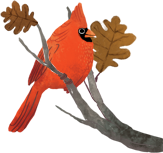
Fossil Hunting
450 million years ago, Quarry Hill Park and surrounding areas in Southeastern Minnesota, were covered by an ocean inhabited by many sea-dwelling creatures. It is these ocean dwelling creature's fossils that remain in the Platteville limestone found in the park today. Uncovered by a quarry operation during the early 20th century, commonly found fossils include: Brachiopods, Trilobites, Cephalopods and Gastropods.

Things to Note
- Dress to get dirty and wet, especially if you are heading to the 'old' quarry.
- There are three large cephalopod fossils visible in the limestone floor of the new quarry.
- Finders, keepers. If you can carry your fossil find in the palm of your hand, you are welcome to take it home to enjoy.
- Look for the cap shack, dynamite shack and compressor ruins when you are fossil hunting in the base of the quarry.

Pro Tips
- Look for patterns like stripes and spirals in rocks.
- Look for fossils in rocks that you can split apart or flake.
- A good time to look for fossils is after a heavy rain.
- Pick up a fossil guide at the nature center to help you identify what you've found.
The Quarry
The limestone quarrying operation left behind several of the stone structures found within the Park. In 1885 the quarry opened up with labor provided by two State Hospital employees and 25 to 55 patients. The quarry was started to provide Platteville limestone for the construction of many of the State Hospital buildings. These buildings included the barn at the old farmstead, as well as the soap house, slaughterhouse, bridge, poultry house, fireplace, and several of the structures found within the quarry itself. It was also a source of revenue for the hospital, as the stone was sold to the community.
An interesting incident drew the FBI to this site in the 1930s. Someone had broken into the dynamite house and stolen a box of dynamite. A special train bringing Franklin D. Roosevelt to town was due the next day. No incident occurred, although there were many uneasy moments and greatly increased security within the region. The missing dynamite was never found.









